An Article By Idai Makaya (written for the Dec 2017 ElliptiGO Newsletter):

Weight loss can be an exciting and empowering journey…
In the fitness industry the beginning of each new year normally sees a flood of people making commitments to new health & fitness goals – as one of their ‘New Year Resolutions’ – so I thought this would be an appropriate time to address the topic of weight loss for the January 2018 ElliptiGO UK newsletter. This article will be all about using the ElliptiGO to enable the achievement of successful weight loss.
Many people start exercising specifically to manage their body weight, or to actively lose weight. Weight management is one of the most important things we can do in order to optimise our health. That’s because our quality of life – and the expected duration of a healthy life – strongly correlate with how much fat we carry on our bodies (and inside them).
Before launching into the details of the ElliptiGO-specific training approach to weight loss it is important for me to address the principles of weight loss & weight management, in general, because these principles are always consistent (regardless of the means chosen to address your weight loss goals).
So I’d like you to think of the ElliptiGO bicycle as a very engaging way of delivering the exercise components of a weight management or weight loss plan. But it is just part of a weight loss plan – and part of a more holistic toolkit which you’ll need to use. It is not the sole factor. Unless you focus on the bigger picture you will not be truly successful with a weight loss or weight management plan.
Goal-setting is probably the most important aspect of weight management, so it fits in well with the concept of New Year’s Resolutions. You will need to know what you are trying to achieve, why you want to achieve it and, importantly, how you will know if you’ve achieved it. So you need to set yourself clear goals.
I always address the goal-setting aspect as the first step in any weight loss plan. Without clear goals you are no different to a person aimlessly walking out of their front door without a particular destination in mind. You may, or may not, end up in a place you want to be in. It’s like rolling a dice whenever you set out without a clear set of goals in mind…
To set weight loss or weight management goals it is important to have a clear and concise image of what you want to achieve. This image should be guided by both science and self esteem. So it is about what science tells you is a reasonable goal and it is also about how you want to see yourself – the best version of yourself. There is nothing wrong with wanting to look your best and that is a completely worthy goal to aim for. But it is also important that the look you strive for meets the strict criteria necessary for all successful exercise and weight management goals, which I’ll outline in this article.
To be more specific about the goal setting aspects, there are two well accepted ways of determining the ideal body weight of an individual. The first method is called the body mass index (often referred to as your BMI), which is a ratio of your weight to your height. And the second is your waist circumference measurement. It doesn’t hurt to use both these methods simultaneously, but if you really want to keep things simple just go with the one which seems easiest for you to implement. They are both appropriate trackers on their own and I’ll now explain each approach briefly.
BMI refers to a ratio of your height to your weight. So the calculation determines if your weight is within the healthy limits appropriate to your height, as determined by large epidemiological (population group) studies. A few years ago the BMI approach slightly fell out of favour because it was said not to account for body composition. The weight to height ratio of a lean and muscular bodybuilder, for instance, is quite high (and can fall outside of the healthy ratios recommended by the BMI calculation). Because of this some commentators begun to favour waist management as the most important factor to measure or set weight loss goals.
However, it is now completely clear that (statistically) if a person is outside the recommended epidemiologically-determined BMI measurements, regardless of their body composition, their life expectancy and quality of life scores are still negatively affected. So a professional bodybuilder with a BMI calculation that falls into the “morbidly obese” range on the BMI calculator has the same life expectancy as a person with a similar BMI calculation who does no exercise at all (and this “morbidly obese” classification actually does apply to all professional bodybuilders).
Followers of the sport of professional bodybuilding will be familiar with these statistics (and with the fact that every year many of their sport’s stars die aged just in their 40’s and 50’s every year). This high mortality rate among professional bodybuilders is directly related to their high BMI calculations (and, of course, the unhealthy means by which the unhealthy BMI measurements have been achieved).
So having explained the significance of the BMI calculation, I now urge you to calculate your healthy goal weight using a BMI calculator as a great way to start setting your new goals. Please refer to this National Health Service tool for all the parameters and be sure to ‘own’ these goals and to take full responsibility for their achievement…
Now to address the other measurement I described earlier, your waist circumference. Use this method either in collaboration with your BMI or in isolation, because you will find that they correlate well in relation to weight loss goal setting and using both approaches just gives you more information (and more accurate metrics to track) as you pursue your weight loss goals.
What are the ideal waist measurements?
In a nutshell, women should ensure their waist circumference never exceeds 80cm (31.5ins) and men should ensure their waist circumference never exceeds 94cm (37ins).
It is important to understand exactly how and where to take these measurements and full details of this are outlined on this link. The measurements outlined above are generic to all men and all women, based on large-scale population studies, but it is clear that the BMI measurement is slightly more tailored to each specific individual and that’s why both methods are worth using.
Now it’s time for us to discus the second universal aspect of weight management, which is something many people either try to ignore (or try to delude themselves into thinking doesn’t always apply). This universal truth relates to the fact that the biggest determinant of success in both weight loss and weight management is your diet – what and how much you eat.
If you are not prepared to address that aspect of your lifestyle you should stop reading this article now, because you cannot address weight loss without addressing your eating.

You are what you eat, some say…
In my experience as a health, healthcare & fitness industry professional I have found the aspect of addressing diet to be the biggest hurdle of all for most people to overcome, which is why I am placing it at the ‘gateway’ to this article – alongside goal setting. Before we proceed I will make this completely clear in the text below:
You will not succeed in long-term weight loss & weight management without understanding the parameters necessary for setting a healthy weight, without setting clear goals (based on those parameters) and without controlling your diet. All three aspects need to be addressed for sustainable success…
There, I’ve said it! And you probably noticed exercise was not included in those top three essential parameters. That doesn’t mean exercise is not necessary as well, it just happens to be 4th in the hierarchy because successful weight loss can actually be achieved using just the 3 principles above, but if any one of them is substituted for exercise, success becomes less likely (not impossible, but less likely).
However, although successful weight loss is achievable without exercise it is (a) much harder to accomplish without an exercise plan and (b) even if an ideal weight is attained your overall health status is not complete without exercise. Without exercise your body will not function as well as it does when it is fit – and it will not respond to your diet as well as it would when you exercise regularly. Also, you will still be more susceptible to illnesses like diabetes if don’t you exercise regularly but have a ‘healthy’ body weight/BMI.
It is very important for me to say that weight loss is faster (and weight maintenance is easier) when you exercise regularly. So even from a purely weight loss perspective it is essential that you exercise regularly.
Some of the numerous benefits of regular exercise are listed on this link. Please have a look at those benefits whenever you feel a lack of motivation and also remember that you need to do this not only for yourself, but for everyone else who cares about you. It really is worth sticking that list of exercise benefits onto your mirror (or somewhere else where you’ll see it every day) if you regularly struggle with your motivation to exercise.
So exercise is important because it not only optimises your health and the performance of your body and its organs, it also assists in weight loss & weight management. And exercise is important because has positive effects on your physiology that improve your health and quality of life for the longer term. Simply being at a good/healthy weight for your height is not the sole criterion for ideal health and quality of life…
If you are still prepared to read on I will assume, for the remainder of this article, that you have accepted the core principles laid out above. This will allow me to move on to the next important principle, sustainability. You must address all weight loss goals as sustainable lifestyle changes. By this I mean you should never consider any weight loss plan which you are not prepared to follow through for the rest of your life.
I do not mean that you will never again change your healthy lifestyle plan – or at least vary it – but the new healthy lifestyle you choose ultimately needs to be addressed like a marriage, with the full intention of sticking with it for life (I started writing this article on my wedding anniversary, hence the comparison)!
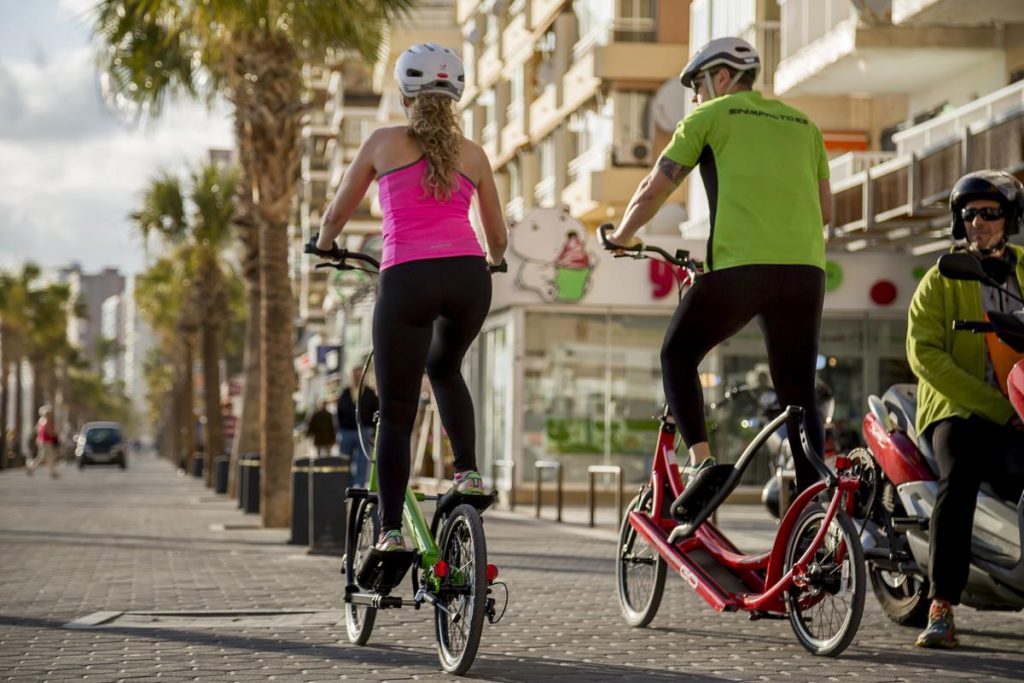
imagine all the places your weight loss journey might take you!
There are good reasons for making lifelong changes and commitments, rather than clearly short term ones. Sustainability is necessary because a healthy weight (and good fitness levels) are only of benefit across a full lifespan. ‘Short bursts’ of success in this matter do not really change your statistics for success, from a purely health, quality of life and longevity perspective.
Your past cannot be changed, but your future can, so it is never too late to start making healthy lifestyle commitments (although the returns will diminish with every year into your life that you ignore your health & fitness status). So as long as you still appreciate living – and as long as you want to make the most of the remainder of your life – it makes perfect sense to set yourself disciplined and concise lifelong health & fitness goals.
Even elderly persons in retirement homes can benefit hugely by making a good health & fitness lifestyle change. In fact, such individuals will tend to see greater short term benefits from adopting a good health & fitness plan than, say, a teenager would (although I must stress that a teenager stands to gain more long-term benefits from adopting a healthy lifestyle and body weight – simply because they have a potentially longer lifespan ahead of them than a very elderly person, which gives them more time to accumulate and compound the benefits of a healthy lifestyle).
So we can summarise the 4 main pillars of a good weight loss plan as follows:
- Set clear, trackable and concise goals (based on tried and tested health parameters).
- Be prepared to adapt the way you eat in order to achieve these goals.
- Make a permanent lifestyle change based around these goals, so that the achievements can be sustained. Weight loss and weight maintenance are a journey, not a destination.
- Be sure to exercise regularly (and ‘vigorously’) for at least 30 minutes a day (on average). An hour a day of exercise probably makes the most sense as a commitment (to allow good warm-up and cool-down time in each exercise session, with another 30 minutes of committed and vigorous activity in the middle).
You probably noticed the exercise requirements listed in point #4 sound pretty low. In your 24 hour days only half an hour really needs to be dedicated to exercise, in order for a weight loss plan to work optimally. Exercise intensity and duration have diminishing returns and for health, fitness and weight loss – so 30 minutes of vigorous daily activity will suffice. “Vigorous” in this instance refers to sweat-inducing exercise which makes you breathless, such that conversation is difficult during exercise.
Some readers who know me might wonder why I engage in 5-day-long ElliptiGO rides and such like, if only half an hour of exercise is the minimum healthy requirement. So I’ll quickly address that issue, as it also relates quite closely to why people use the ElliptiGO (rather than a gym or some other form of exercise). The answer is encapsulated by one word – ENGAGEMENT (see, that wedding theme GOing again)!!!

Physical activity is essential for good health, but it GOes much further than that…
I do more than the bare minimum exercise requirement simply because it is engaging. And this point is crucial. You will tend to stick with lifestyle changes and exercise commitments which you actually enjoy doing. So find the most enjoyable (but effective) approaches to exercise to ensure it works for you as a lifelong change in your lifestyle.
I follow more than the bare minimum exercise requirements because I have been on a lifelong journey and with each passing year I tend add to and vary what I do to keep exercise fresh and engaging. I also seek goals which require me to hit my minimum criteria – and much more – so that I am enthused and excited by my fitness goals. And that’s because I enjoy challenging myself.
In other words, your exercise program should serve to actually enrich your life. It should be one of the most important and satisfying parts of your life – rather than just a basic ‘hygiene factor’ – or it won’t work for the longer term. Because engaging with exercise is such an important topic I actually wrote a full article about the need for setting yourself engaging exercise goals (which can be read here).
And that discussion about engagement pretty much transitions into why you might chose an ElliptiGO bike for your exercise plans and your weight loss program – rather than some other (potentially cheaper) exercise option. The ElliptiGO is quite simply one of the most engaging pieces of exercise equipment in existence – and it is also highly effective and versatile.
- Effective exercise equipment burns calories and conditions the body effectively.
- Engaging exercise is fun and leaves you looking forward to your next session.
- Versatile exercise allows you to do many different things and still hit your targets. Versatility is what the ElliptiGO offers. It can be a bicycle. It can be a treadmill. It can be an elliptical machine. It can be a long distance cruiser. It can be a high intensity ‘spin bike’. It provides the full range of cardiovascular exercise requirements and engages a high percentage of your body’s total musculature.
Now let’s discus the more general philosophy of weight loss & weight management using exercise…
Think of yourself as being a bit like a toilet… Stick with me on this, please! A toilet has a tank/cistern for flushing out the toilet bowl – and this tank has water going in and out of it. If you flush the toilet, it needs to rapidly fill up the cistern again. But it does not overflow, because once it reaches the pre-determined water mark its internal ‘water-balance contraption’ closes off the water intake. The same analogy can be used for our bodies and the energy we put into them.
Think of our energy intake as the water and the cistern as our bodies. We also need to maintain a balance. Exercise ‘flushes’ out energy. Food intake brings in energy. Once the balance is achieved no more water needs to enter the system. So that is how we should manage our energy balance as well. If we keep on ‘forcing water into the tank’ after the correct balance point has been attained it is similar to destroying the water-balance mechanism in the toilet cistern, so that it overflows – and floods the room.
Obesity is the equivalent of flooding, in the case of weight maintenance…
So our goal is to attain energy balance. But it is important to be aware that the balance mechanism is more important for keeping the toilet cistern from overflowing than flushing is. In this ‘toilet scenario’ exercise is the equivalent of flushing. You could just flush a faulty toilet constantly to stop it filling up with water, if the balance mechanism is defective, but that is not smart. And, more importantly, it is not fun – and it is not sustainable.
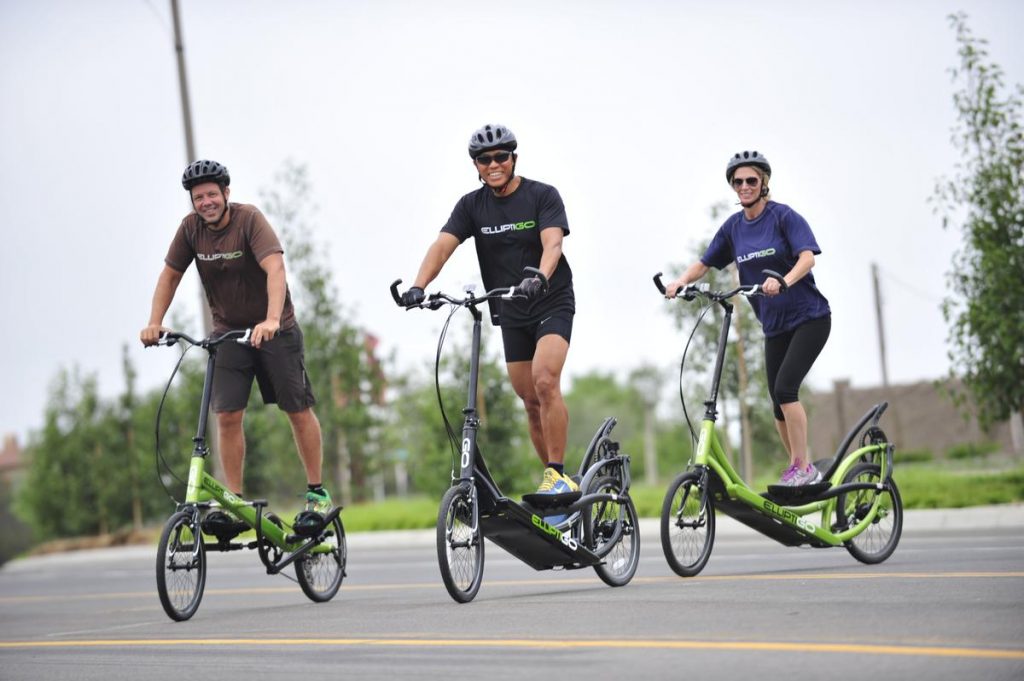
You are guaranteed to meet some interesting companions whenever you embark on an exercise and weight loss journey…
In other words, do not use exercise as your sole tool for losing weight because that approach is flawed – it is unsustainable and it is ultimately unsuccessful. Regulation of energy intake is the biggest factor in attaining energy balance. But, having said this, exercise not only helps, it is also essential to the weight loss and energy balance puzzle. And that is where a tool like the ElliptiGO fits into this puzzle. So be prepared to address how you eat – and what and how much you eat – if you want to succeed at weight loss and weight management.
The internet is full of resources to help you address the dietary aspects of weight loss, so please do some research if you need to, but stick with the sustainability and lifestyle change aspects I stipulated earlier. If you want a few pointers from me on the dietary support options out there do send me a message and I’ll see if I can direct you more specifically towards some of weight loss organisations that I believe in.
But the aim of this article is to explain the role of the ElliptiGO in a successful weight loss plan, so that is what I’ll dedicate the remainder of this article to. And that’s probably the most fun part of the weight loss equation!
Using the ElliptiGO as part of a weight loss plan:
Exercise for weight loss needs to meet a few basic criteria and the ElliptiGO is one of the best options out there for meeting these criteria, as pointed out earlier. But how does one make use of the ElliptiGO as a weight loss tool? This is a loaded question and the permutations are almost endless, so I will try to split the options into just two basic approaches, as follows:
- Low intensity cardiovascular training.
- High intensity cardiovascular training.
If the ElliptiGO is used for weight loss it can play a role in either of the two ways mentioned above. It makes sense to seasonally alternate between the two approaches from time to time and I will explain each approach in more detail now.
1. Low Intensity Cardiovascular Training on the ElliptiGO:
When I speak of low intensity training I am really referring to low intensity and low duration training. And by low intensity I am really referring to moderate intensities of training (because you should not really make exercise too light or it becomes virtually ineffective). High and low are relative terms.
Pacing slowly on the ElliptiGO can produce a similar intensity to walking – and although that’s useful when you first start working on your fitness, it is certainly not the way to progress for the longer term (and that’s not what most people are after when they invest in an high value piece of exercise equipment like an ElliptiGO).
How do you do it?
Walking (or walking intensity on the ElliptiGO) burns very little energy for each minute or hour spent exercising. So in the context of low intensity exercise we are actually referring to sessions 60-120 minutes long, carried out at an intensity that is easy to sustain (but which still makes speaking difficult and causes you to sweat as you train).
This moderate effort level can actually be very satisfying – without being intimidating – and it will induce the physiological changes we desire in our bodies (burning fat/calories during exercise and increasing the speed of your general metabolic rate after training).
More disciplined calorie control is required to lose weight under a moderate intensity approach than under a high intensity training approach, because the uplift in metabolic rate induced by moderate intensity training is nothing like that achieved through high intensity training. But high intensity training can be intimidating for many people (and can discourage exercise if used by people unsuited to the mentality). So use approaches which are both effective and enjoyable for YOU.
Because the moderate rides I’m recommending will not be not very long rides they will not normally send your appetite spiraling out of control! So more rigid and disciplined calorie control is quite practical under a moderate intensity training protocol. Remember, it is about what YOU are comfortable doing – and what YOU enjoy doing – so use the approach that is right for YOU.

Andy before losing weight…
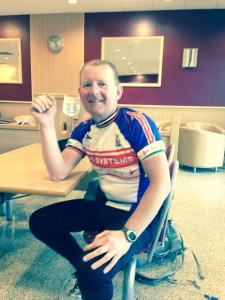
Andy after losing weight… He looks much happier!
2. High Intensity Cardiovascular training on the ElliptiGO:
High intensity training suits people who are ‘time-poor’ and want to burn lots of calories during and after exercise (whilst also attaining very high fitness levels) – all without spending a lot of time exercising.
It is important to be aware that a high intensity training protocol cannot be used until a good fitness level has already been attained, so one needs to be on a low to moderate intensity training plan for a few months before transitioning to high intensity training. It is not useful to start high intensity training from a low fitness base.
How do you do it?
The high intensity training approach will involve a good warm-up (to get the muscles functioning ideally and to eliminate injury risks) followed by a very hard effort (as hard as can be sustained for about 10-60 minutes) followed by a cool-down (to remove the lactic acid and waste products of exercise) followed by a well-balanced meal (to fire up the metabolism and repair the damage caused by the exercise session).
High intensity training can be done using intervals of almost 100% effort, followed by short rests, or by simply holding the highest effort level sustainable for the set training duration. This means that the duration of a high intensity session tends to be much shorter than that of a moderate intensity effort. It also meas that a reasonable degree of motivation is required for a high intensity training approach, because the gratification tends to only come after the session is over (rather than the immediate enjoyment usually associated with moderate intensity training sessions – which tend to be enjoyable from start to finish).
Because higher intensity rides take a higher toll on the body (and its hormonal systems) you will need more recovery time after high intensity training sessions, than after moderate intensity ones, even though the high intensity sessions are much shorter. So a high intensity approach actually saves even more time, overall, because it cannot be used more than 2 or 3 times in a single week (or your body becomes stressed, over-trained and much more likely to become ill or injured).
So you must exercise LESS FREQUENTLY under a high intensity regime, to give your body time to recover properly and adapt to each effort. And you must remember that high intensity training may not burn as much energy WHILE YOU EXERCISE as a long ride at a lower intensity would, but it burns more energy across the whole day (in the time when your body is recovering after training). This ‘after burn’ effect happens because of the increased metabolic rate induced by high intensity training – and also because of the higher tissue recovery requirements (which need calories from food to help the body repair, recover and adapt).
It’s that simple. High intensity training gives great returns for very small time commitments. It also has the ‘special effect’ of increasing the rate at which the body burns fuel for the rest of the day and it plays a role in suppressing/controlling your appetite. This last point (about appetite suppression) is really important – and is also the reason why I don’t particularly recommend riding long distances as a way to achieving good weight loss.
Why long rides are not ideal for weight loss?
Very long rides can stimulate your appetite – both during and after riding. If they are long enough they can often involve eating regularly during the rides themselves – meaning that they increase your overall calorie intake, rather than reducing it (which is clearly counter-intuitive to losing weight).
So people who ride very long distances regularly need to be much more careful about maintaining an overall calorie balance (because although they might burn more energy during the long rides, they might also take in as much energy as they are burning – just to sustain the long rides). And long rides don’t have as big an ‘after-burn’ effect on your metabolic rate after training ends (when compared to high intensity rides).
Does this mean long rides are off the table for weight loss?
Definitely not!
And why not? Because of the important point I mentioned earlier on, regarding ENGAGEMENT.
If you naturally gravitate towards longer rides you will need to consider if they are more engaging (and if they are more likely to be enjoyed for the longer term). And if they are considerably more engaging for you, then by all means use them. Just be aware of their shortfalls (relating to fewer calories burned per minute spent exercising) and their bigger effect on stimulating your appetite.
I personally find that many of the aforementioned drawbacks of long rides can be countered by completing the rides without eating before or during each ride (a practice called “fasted training”). I also counter the effects of increased calorie demand for long rides by enforcing calorie-restriction protocols on days when I do not train, such as intermittent fasting.
But those approaches that I use to counter the negatives of long riding don’t appeal to everyone, so just be sure to find the training structure which YOU will enjoy and engage with the most. And it must also meet all the necessary criteria we’ve already covered earlier in this article for it to be effective.
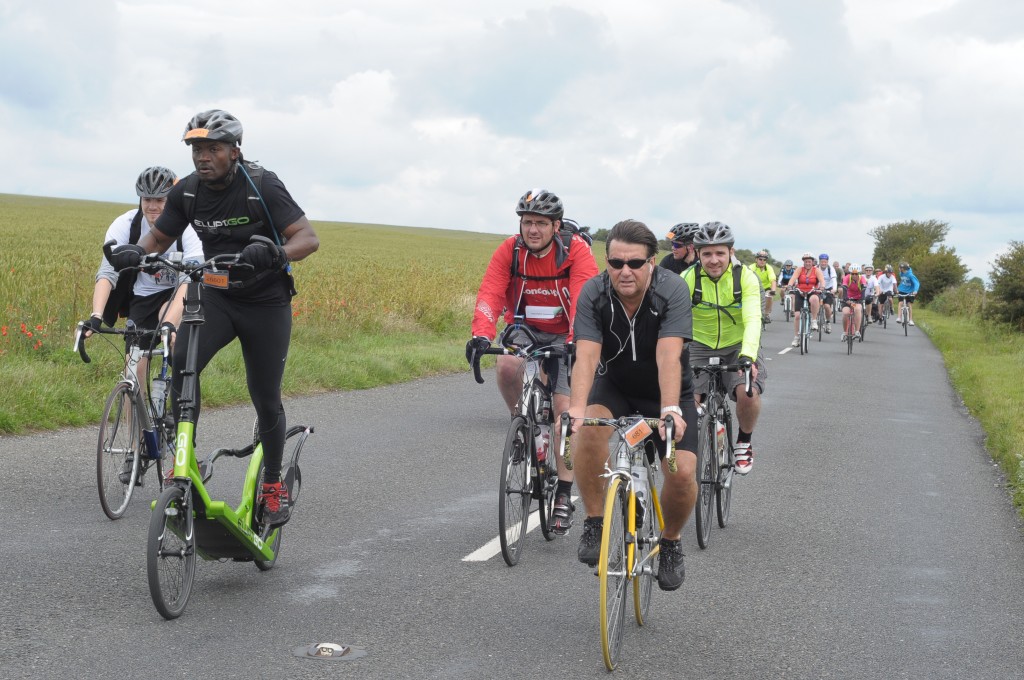
Long rides – who needs them…?
I actually enjoy both long rides and high intensity sessions. So I often will use a ‘hybrid approach’ which mixes high intensity riding into medium distance weekend rides (or an approach which uses high intensity short rides on weekdays and more leisurely long rides on weekends). That way I get to benefit from both approaches.
So don’t rule out longer rides as part of a weight loss or weight management program. However, this article is mainly about weight loss – so my focus in this article is on the best methods of ElliptiGO training for weight loss.
Now that we have discussed the two main approaches to weight loss training on the ElliptiGO it is important to be aware of the need to set a timeline to your weight loss goals. By this I refer to the fact that once you have set your goals and engaged in your new training and dietary lifestyle changes, you will also need to have a target date for when your ideal weight should be achieved.
This is really important. Set yourself an end date by which you should have attained your goal ideal weight. Going on the feedback of the most successful ‘weight losers’ it is important to set the goal for the shortest possible time. One of the biggest disappointments I encounter is people with weight-related health problems saying things like: ”I’ll ease myself in and give myself a couple of years to lose the weight’…’
That NEVER works. It’s just a way of finding excuses to put things off and procrastinate further. It is actually a form of shirking responsibility. If your health is being threatened you need to address it urgently. Not “when you have time” or when it suits you or “one day”. Urgently. So you must set yourself the shortest realistic timeline for your weight loss to be achieved in – and then get on with it.
Procrastination and wishful thinking will not get you to your goals. It is not an easy thing to do, or the majority of the population wouldn’t be obese. But the majority of us in the Western World are obese, so that’s the level of the challenge we face. When you set a weight loss goal it needs to be pursued aggressively.
How do you know what the timeline needs to be?
The best way to set a goal date for your weight loss goals is to use the formula that stipulates that you should not lose more than 1kg (2.2lbs) every week. This is because fat simply cannot be burned any faster than the rate of about 1kg per week – and if you lose much more than 1kg in a week it is likely that the extra weight you are losing is not fat and the additional weight loss above 1kg per week is actually likely to be unhealthy.
Any non-fat-related weight loss isn’t ideal (apart from the initial very fast weight loss usually experienced in the first week or two of an aggressive weight loss plan). The initial weight falls off faster because the amount food in your gut reduces when you control your food intake more effectively (meaning that you will also absorb less water into the food within your gut). So your weight initially reduces simply by carrying less food and water in your gut, when your weight loss journey first begins.
When you have used the BMI calculator to calculate your ideal healthy weight you then need to calculate how much weight you have to lose by subtracting the healthy target weight from your current weight. Then you can divide the weight loss target by the ideal weekly rate of weight loss (1kg/week) to calculate how long this should take you.
For example, if you are 10kg overweight, at a rate of 1kg per week the shortest time required to shed the excess weight in a healthy way will be 10 weeks. It might take a bit longer if you run into distractions, or if you need to repeatedly tweak your approach, but it should not take less than 10 weeks (if you do it in a healthy way).
As you get closer to your ideal weight it will often become harder to lose the final bit of excess weight and you will need to carefully consider your diet and exercise options at that point. I say “carefully” because it is quite possible to use very aggressive (but ultimately unsustainable) alterations to your lifestyle plan which will get you to the target successfully – and on time. However, if those changes are short-term in nature, then as soon as you relax the schedule the weight will return. This last point is very important.
Use lifestyle changes to attain your goals so that once attained they are easy to maintain. If you cannot find the right lifestyle changes to reach your goals then any goals you achieve will only be temporary. Think of it exactly like riding your ElliptiGO bike. If you stop pedaling the bike will slow to a halt. The only way to sustain a given speed is to pedal with an appropriate energy output. Likewise, with weight loss, whatever gets you to the ideal weight will also keep you there (for as long as you continue to do it).
If you cut back on the measures that have helped you lose weight you will regain that weight again.
In life, all success has to be earned. As soon as you stop doing what has made you successful, in any discipline, you will become less successful. If you stop pedaling your bike you will slow to a halt. So success in all aspects of life is determined by what you are putting in. If you stop making an effort at work, in your relationships (GOing back to our marriage analogies), or in your diet & exercise – then all your gains will be lost and any successes achieved will be threatened.
The price of freedom is eternal vigilance…
So, to round off this discussion, if you are new to using the ElliptiGO it is important to master the basics and to be safe whenever you are using the machine. You also need to be using the machine correctly. So please refer to this ‘starting out’ article (which I wrote specifically for people who are new to the ElliptiGO) before launching into your weight loss training plans! And remember, it is a journey. There is no rush. It is best to start the journey carefully – and to start the journey as you mean to continue it.
MASTER THE BASICS FIRST – DO NOT RUSH!
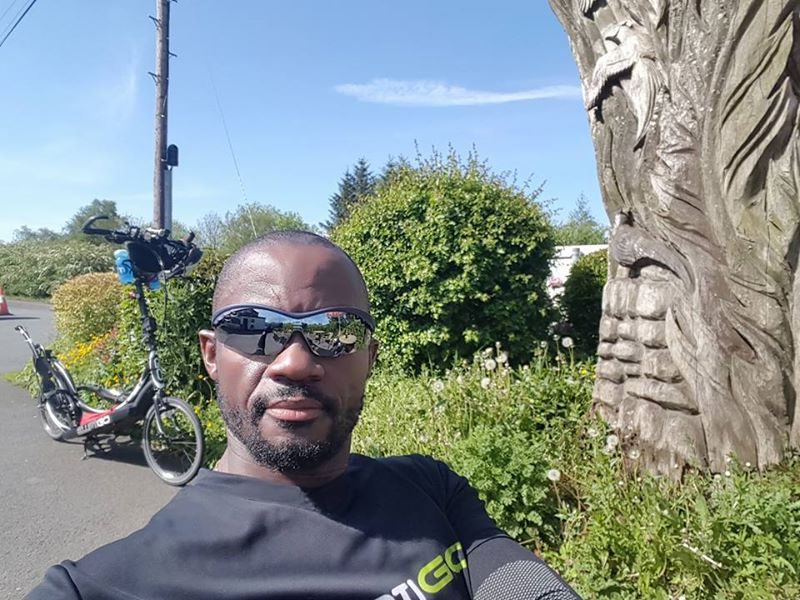
When your fitness goals are reached it is NOT time to sit back and relax!
I hope this article has been insightful and would now like to wish all of you who are pursuing important weight loss goals every success. You owe it to your loved ones, to your communities – and to yourselves – to optimise your weight (and your health). So if you require further clarifications – or if you have any questions related to this article – don’t hesitate to get in touch and I’ll see if I can be of further help.
And, finally, if you’re looking for related ideas (and, quite frankly, for some inspiration) then why not have a look at some of the different weight loss stories and testimonials on the ElliptiGO UK website. Hopefully one of you reading this article will be able to share your own inspiring weight loss story in the near future (and will motivate others to chase their weight loss goals too)!
Best wishes!
Idai Makaya
